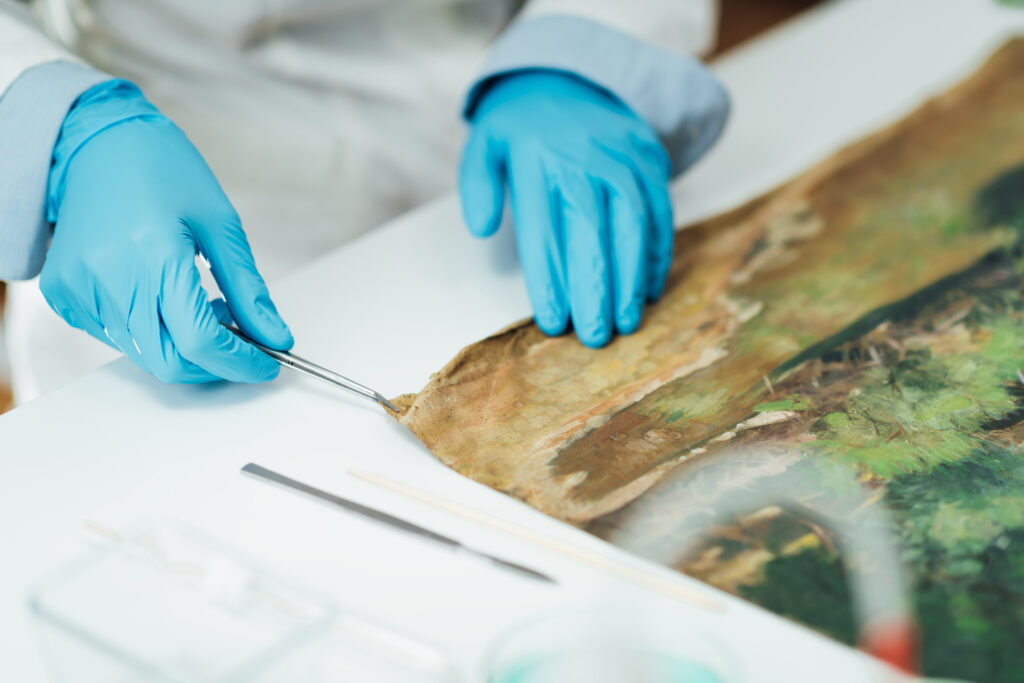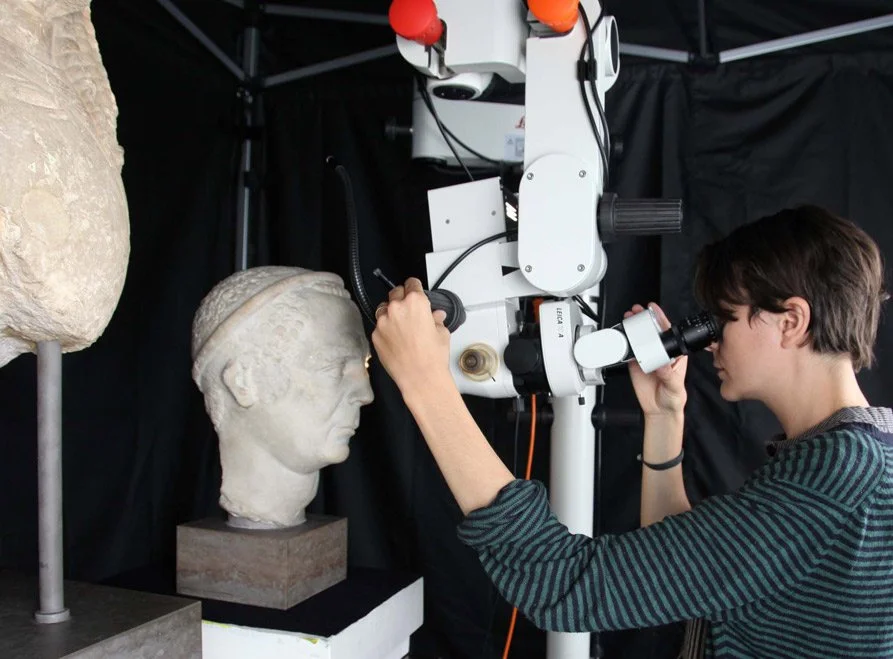
Whether artifacts or paintings, conserving art protects our cultural heritage for future generations; from the Mona Lisa to ancient pottery, art conservators play an essential role in maintaining the integrity of art and artifacts. By using microscopy, solutions for detail-rich work, analysis of structures and materials, and accurate documentation of findings are optimized. This significantly benefits restorers, art historians, archaeologists, or conservation experts working in museums or workshops. Let’s place art and microscopy ‘under the microscope’ and look closer.
Rejuvenating paintings
For many, paintings are considered the epitome of art. Over time though, damage caused by general wear, tear and the environment can cause havoc on even the best-placed pieces.

One essential element of restoration is pigment analysis and investigating the artist’s use of paint layers. An example is Leonardo da Vinci’s iconic Mona Lisa. In 2004, the Louvre Museum in Paris undertook a restoration project to remove the yellowing that had accumulated over time. A specifically designed microscope allowed restorers to examine the painting at high magnification to make otherwise invisible details visible. The microscope provided a method to analyze the surface and identify areas that required attention by combining UV and visible light. In this way, restorers could remove the yellow layer without compromising the integrity of the painting.
Another example of microscopy in art is Vincent van Gogh’s Starry Night. In 2012, restorers analyzed areas where the painting was cracked and discoloured. They were able to correct these flaws to rejuvenate it to its original brilliance, all with the help of microscopy and advanced imaging techniques.
Artifacts Restoration

Pottery and ceramic artifacts are also commonly found in museums and galleries, and microscopy solutions play a crucial role in their restoration and conservation. One of the biggest challenges in restoring pottery and ceramics is identifying the materials used in their creation. Different types of clay and glazes have unique properties that affect their durability and appearance over time. With the help of microscopy solutions, restorers can analyze these materials’ composition and identify potential issues impacting the artifact’s longevity.
An example of the use of microscopy solutions in the restoration of pottery is the Terra Sigillata pottery from Ancient Rome. Terra Sigillata is a fine, red pottery widely produced in the Roman Empire. The pottery is coated with a thin layer of glaze that is polished to a high shine. Over time, this ‘finish’ on many pieces of Terra Sigillata pottery had become cracked and discoloured, clouding the true beauty of these artifacts. By using microscopy solutions, restorers have analyzed the glaze and identified the causes of these issues. Restorers developed new techniques for restoring the pottery to its original beauty and for future generations to appreciate these artifacts for years to come.
This method of microscopy extends to textiles, as in the case of ancient Egypt artifacts. Cloth, over time, becomes sensitive to decay and, therefore, a very challenging material to work with. Again, with the help of microscopy, restorers could repair fibres in detail – a feat which would not have been possible without this powerful technology.
Microscopy for art conservation and restoration
In conclusion, microscopy solutions play a vital role in restoring and conserving artwork and cultural artifacts. They allow restorers to analyze the structure and composition of these objects in detail, identify potential issues, and develop appropriate solutions. As we have seen, microscopy solutions have led to many successful restorations, including some of the world’s most iconic artworks and artifacts.
Opti Tech’s new Opto Advanced Digital Imaging Modules are an exciting development in this field, providing restorers with even more advanced tools. With these tools, we can look forward to many more successful restorations and a greater appreciation of the beauty and significance of our cultural heritage. Optic Tech Scientific solutions allow you to discover the world beyond sight alone. For more, visit www.opti-tech.ca.
